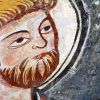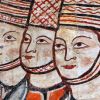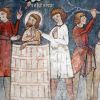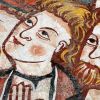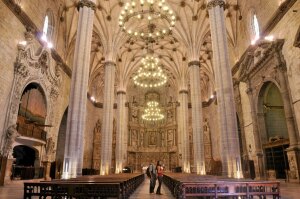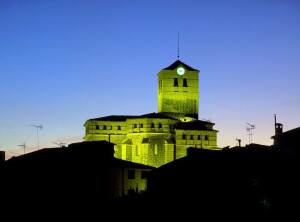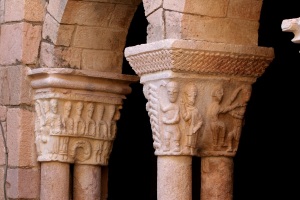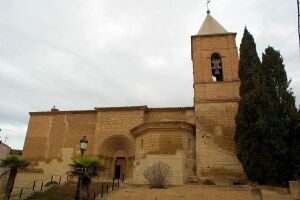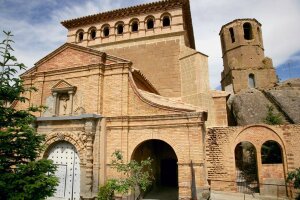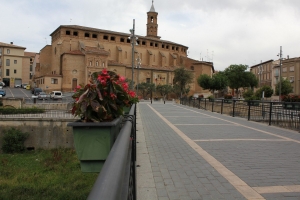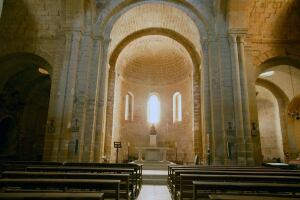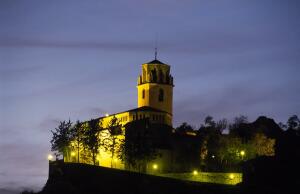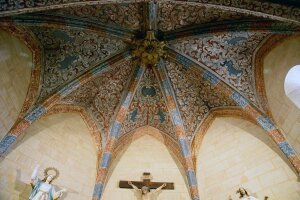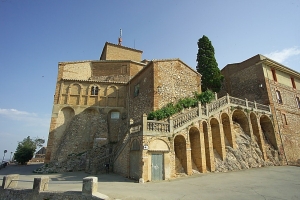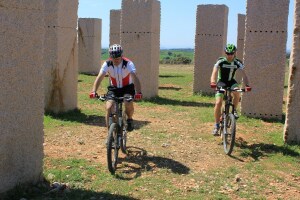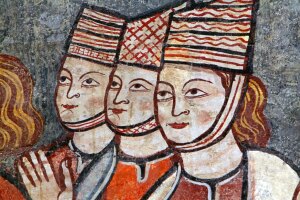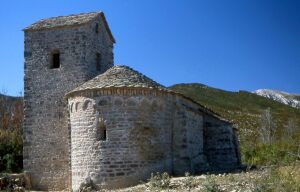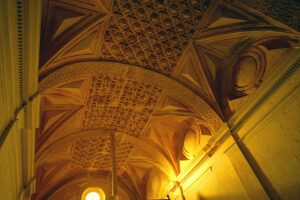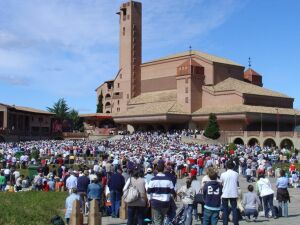Although this building is now only used as a country chapel, in the past it held the role of parish church. It was constructed in the 12th century following the popular design of the era, which was characterised by simplicity and economy: a rectangular layout, square east end and a wooden roof with two slopes supported on large pointed arches.
During the Romanesque era, and following a tradition that was much older, the churches were usually painted with pictures. This had the aim of providing information about the bible and educating parishioners who could not read and write
This tradition of painting the inside of the churches with murals continued though the 13th century. However, the style began to change soon after and gave way to paintings that we now know as early Gothic (so called as they were the first of this style), French Gothic (as they originated in France) and lineal Gothic (as strong lines and old colours dominated.)
These new styles first arrived in Somontano on items of furniture, and in particular on miniatures, both of which were easy to transport. The exchange of illustrated books was fairly common betweens canons from the larger cathedrals and monks from important monasteries as they almost always had a workshop with artists and amanuenses (people who copied manuscripts) dedicated to reproducing and embellishing the holy texts. With the arrival in Huesca of the first of these small, illustrated books from France, a number of workshops sprang up in the area surrounding the cathedral. These artists often undertook more than one type of activity and many painted miniatures as well as murals. However, the origin of the murals paintings in Somontano, and many more throughout the Hoya de Huesca region, can be traced to the villages of Liesa and Ibieca.
These particular paintings present many stylistic features that are unmistakably Gothic. The colours are vibrant and bright, colours that are particularly associated with stain glass windows; those of white, red and blue. Another similarity to painted windows is the predominance of the lines over colour. This gives rise to slender figures with elegant bearing outlined by lines that afford them a sinuous flow.
A further characteristic that highlights the move away from Romanesque art is the fact that the figures are shown in scenes and are set in a definite location and time period. They are no longer hieratical, inexpressive, isolated and timeless as depicted in Romanesque art. The figures interact and exchange gestures and through the background scene or the architecture featured, they can be pinned down to a specific time and location.
These scenes were not hung by chance, they appear in registers and follow a specific order in frames, and so the origin of the first Gothic painting in miniature can be determined.
Nowadays only part of the collection of paintings that once decorated the church can be seen in Bierge as in 1949 many were removed, sold and distributed among various museums and private collections across the world. (the National Art Museum of Cataluña, the Museum of Fine Art in Toronto, the Ontario Art Gallery, the Metropolitan Museum of New York, the Joslyn Art Museum in Omaha, Nebraska and the Houston Museum in Texas).
As this removal took place, two teachers intervened in order to identify the chronology and style of the paintings. These teachers worked over two consecutive periods and are known locally as the first and second teachers of Bierge.



